The Economics and Statistics Division maintains archives of previous publications for accountability purposes, but makes no updates to keep these documents current with the latest data revisions from Statistics Canada. As a result, information in older documents may not be accurate. Please exercise caution when referring to older documents. For the latest information and historical data, please contact the individual listed to the right.
<--- Return to Archive
For additional information relating to this article, please contact:
March 06, 2024INCOME AND FINANCIAL DATA OF INDIVIDUAL T1 TAXFILERS, 2022 Statistics Canada has released preliminary data from the 2022 personal income tax returns (T1). This information reports on annual income as well as on charitable donations and Registered Retirement Savings Plan (RRSP) contributions for the 2022 taxation year. Data are not adjusted for inflation.
In 2022, the median total income of individuals in Nova Scotia (including both market income sources and government transfer income) was $38,030. This was the second lowest median total income among provinces (ahead of Newfoundland and Labrador). National median income was $41,930 with the highest median income in Alberta.
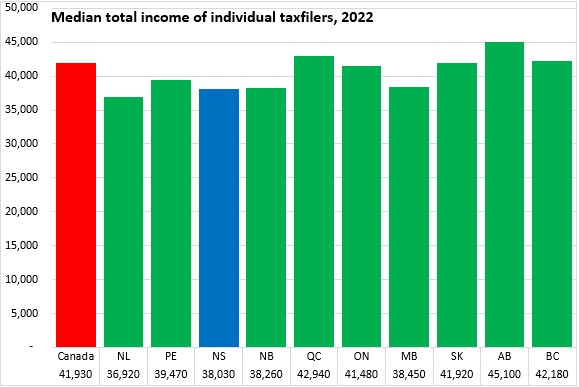
From 2021 to 2022, Nova Scotia's median income increased by 2.1%. National median income increased by 3.7%, led by a 7.2% gain in Québec. All provinces reported increases in median income, but Newfoundland and Labrador reported the slowest growth.
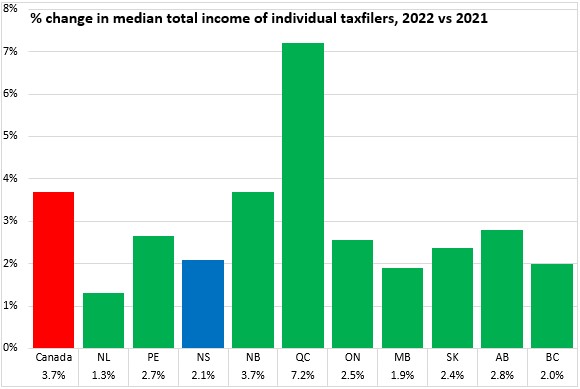
Across Nova Scotia, median total income was higher in Halifax than in the rest of the province. Taxfilers in the Cape Breton Regional Municipality reported the lowest median incomes on their 2022 returns.
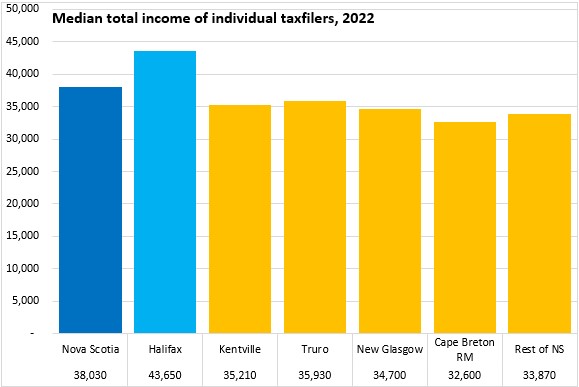
Median income growth from 2021 to 2022 was fastest in Halifax. Median total income declined in both the New Glasgow Census Agglomeration and in the Cape Breton Regional Municipality.
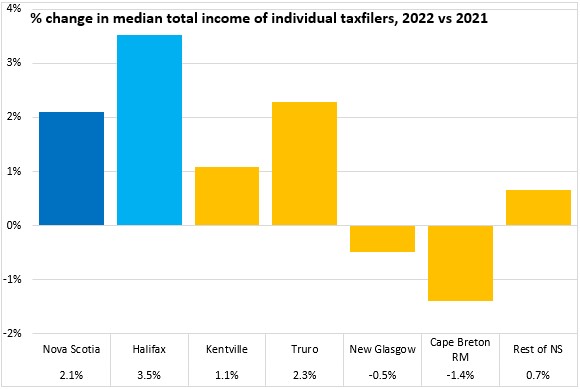
Median employment income of individuals in Nova Scotia was $38,180 in 2022 - the third lowest among provinces (ahead of Prince Edward Island and Newfoundland and Labrador. National median employment income was $43,180 in 2022 with the highest median in Alberta.

Median employment income was up 5.9% in Nova Scotia in 2022. This was faster growth than the national average (+5.0%). All provinces reported higher median employment earnings with the fastest gain in Québec and the slowest increases in the prairie provinces.

Across Nova Scotia, median employment income was highest in Halifax in 2022 ($43,750) and lowest in the Cape Breton Regional Municipality ($31,730).
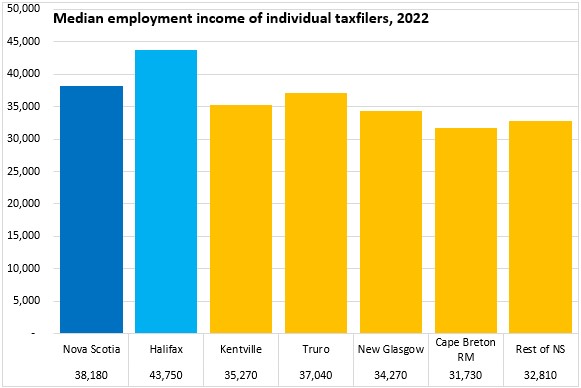
Growth in median employment income was fastest in the Truro Census Agglomeration and slowest in the Cape Breton Regional Municipality as well as in the Kentville Census Agglomeration.
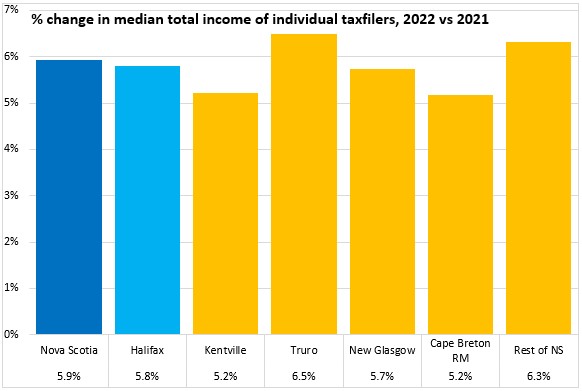
Compared to national averages, a higher portion of Nova Scotian taxfilers report total income under $60,000 and a lower portion of Nova Scotian taxfilers report total income over $80,000.
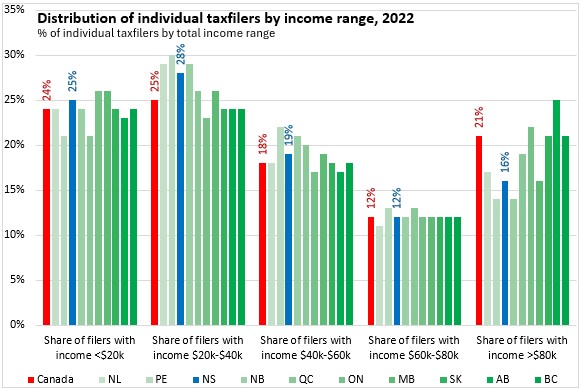
Although 25% of Nova Scotia taxfilers reported total income under $20,000, this group's income was just 3% of the total income reported in 2022. In contrast, the 16% of Nova Scotia taxfilers with incomes above $80,000 accounted for 42% of the total income reported in 2022.
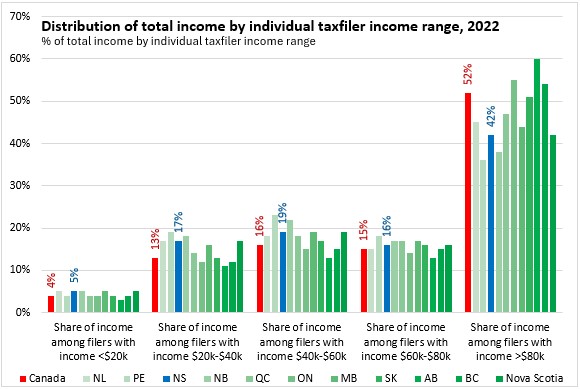
Across Nova Scotia, the 2022 income distribution skewed higher in Halifax. Higher portions of Haligonians reported incomes over $80,000 and lower portions reported incomes under $40,000.
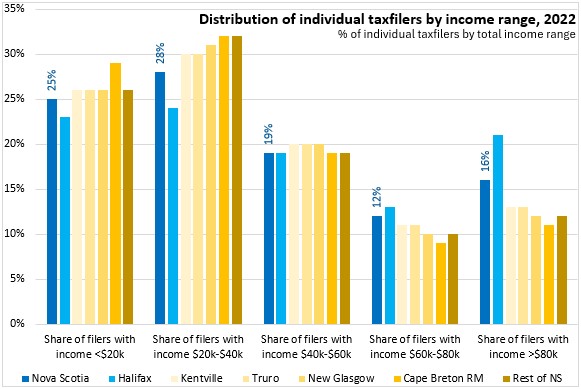
Almost 50% of total income reported in Halifax was from individuals with $80,000 or more.

Nova Scotia median total income has risen steadily in recent years, though employment income growth slowed in 2020 and 2021 due to the pandemic while total income was lifted by extraordinary government transfers at that time. These pandemic-related distortions in income trends were repeated across all regions of the province.

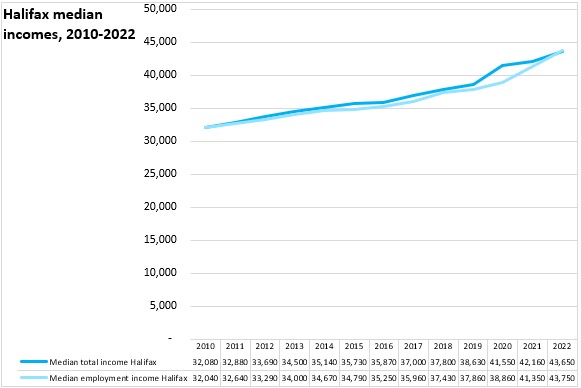
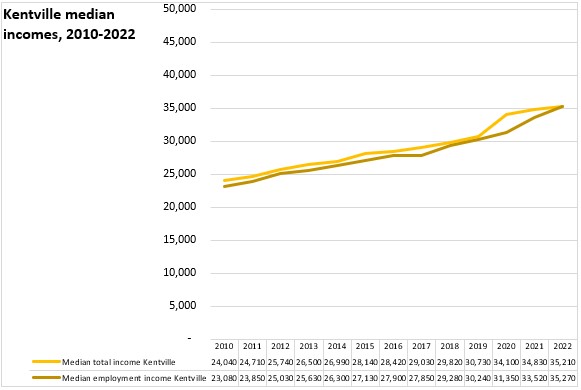
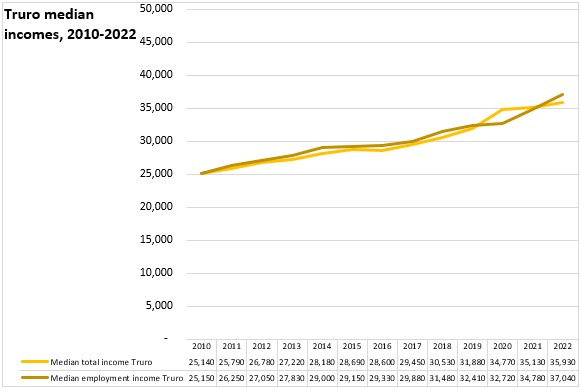
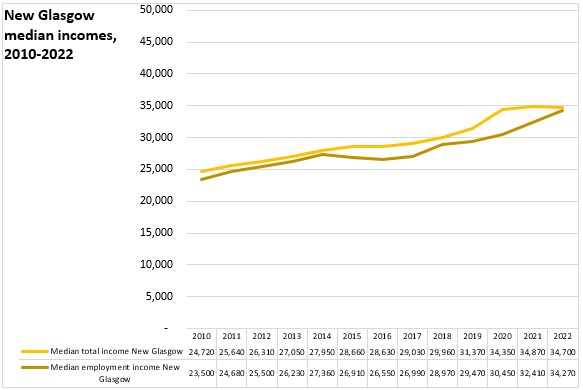
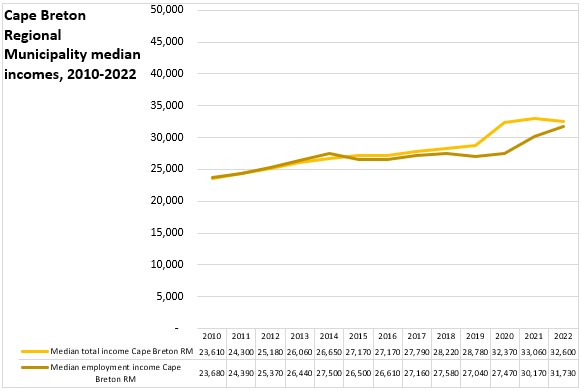
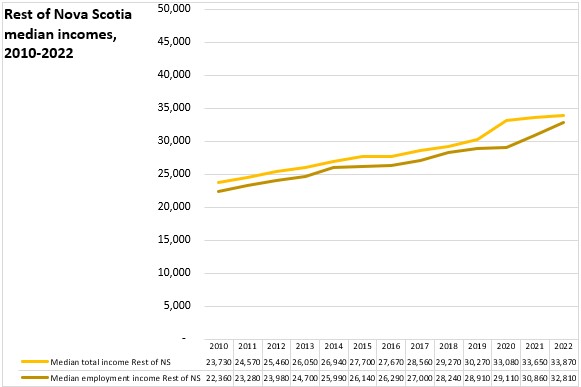
Charitable donations
As charitable donations are reported on the T1 tax return, this information allows examination of Canadians' charitable contributions.
In Nova Scotia, 15.6% of taxfilers claimed charitable donations in 2022. This was below the national average (17.1%). New Brunswick reported the lowest percentage of charitable donations among taxfilers while Manitoba reported the highest.
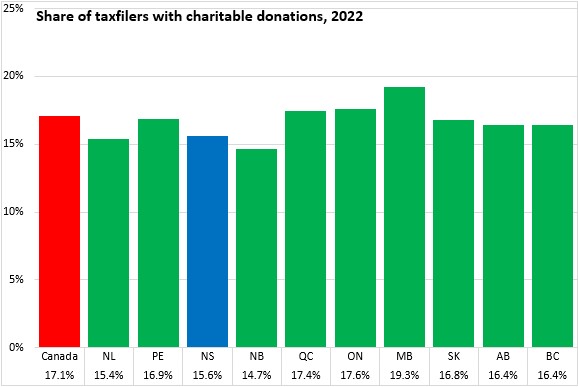
Across Nova Scotia, the portion of taxfilers with charitable donations was highest in Halifax and lowest in the Cape Breton Regional Municipality.
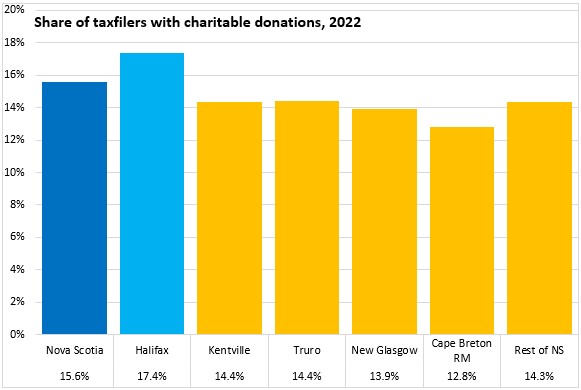
Despite a lower share of taxfilers claiming charitable donations from Nova Scotia, the median donation amount among donors ($430) was higher than the national median ($380). Median charitable donations were highest in the four westernmost provinces and notably lower in Québec.
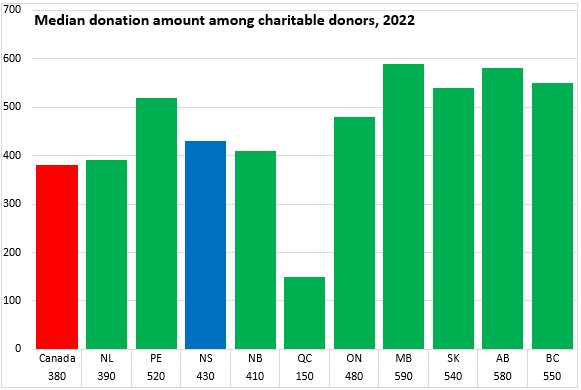
Across Nova Scotia, median charitable donations were highest in the Kentville Census Agglomeration. Charitable donors in the Truro Census Agglomeration reported the lowest median contributions.
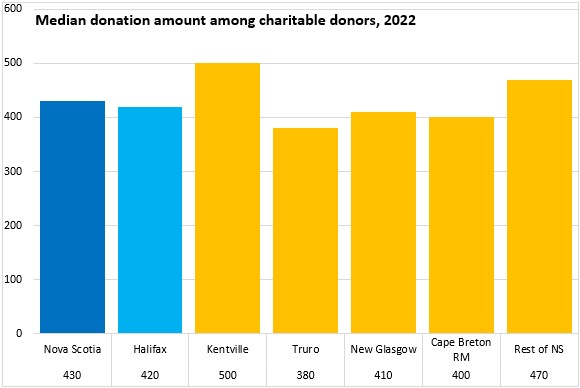
Over time, the portion of taxfilers claiming charitable donations has declined - for every province as well as for every region in Nova Scotia.
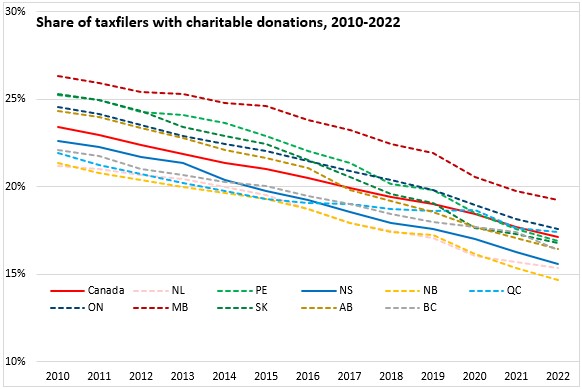

Registered Retirement Savings Plan (RRSP) contributions
As RRSP contributions are also reported on the T1 personal income tax return, this data illustrates savings behaviour.
In 2022, 16.6% of Nova Scotia taxfilers made RRSP contributions. This was third lowest among provinces (ahead of New Brunswick and Newfoundland and Labrador). RRSP contributions were most prevalent among Québec taxfilers.
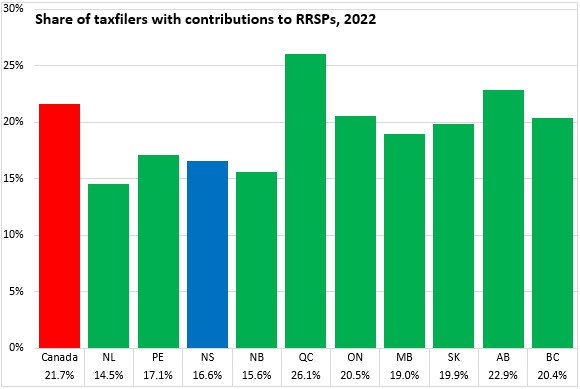
Halifax reported a higher portion of taxfilers with RRSP contributions in 2022 (21.3%) while the Cape Breton Regional Municipality had the lowest prevalence of RRSP contributions (10.2% of taxfilers).
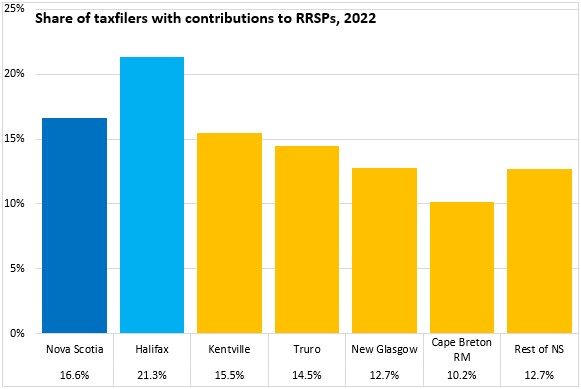
Those with total income under $40,000 reported a disproportionately low share of RRSP contributions, relative to their share of income.
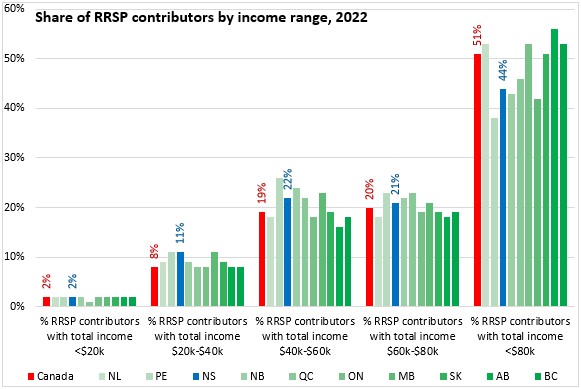
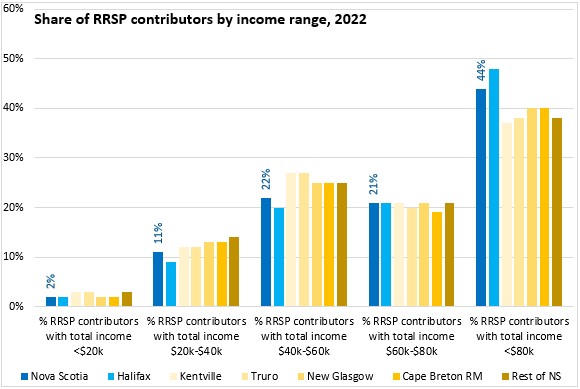
The portion of the population making RRSP contributions has declined in Nova Scotia in 2022 after small gains in 2020 and 2021. Many (not all) provinces reported a higher portion of taxfilers making RRSP contributions in 2020 and 2021, followed by declines in 2022.
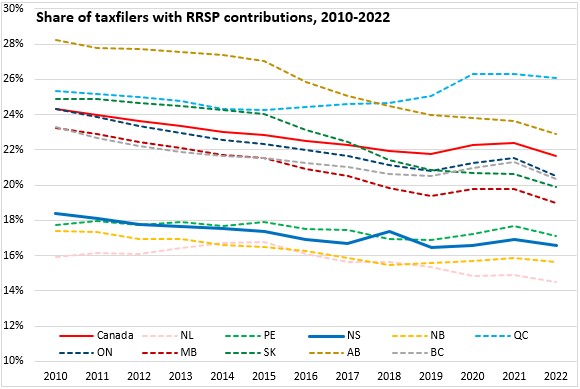
In Nova Scotia, there was an unusual spike in the portion of the population reporting RRSP contributions in 2018.
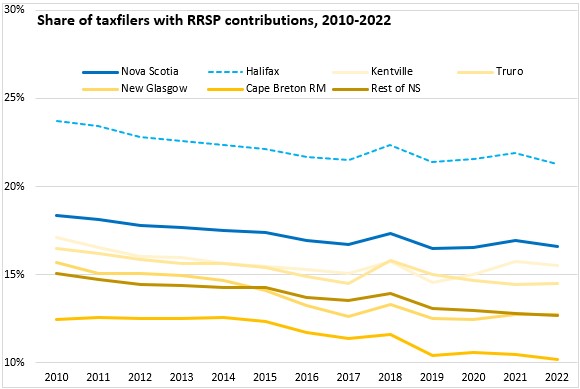
Source: Statistics Canada. Table 11-10-0047-01 Summary characteristics of Canadian tax filers (preliminary T1 Family File); Table 11-10-0044-01 Selected characteristics of tax filers with Registered Retirement Savings Plan (RRSP) contributions; Table 11-10-0003-01 Tax filers with charitable donations by income
<--- Return to Archive